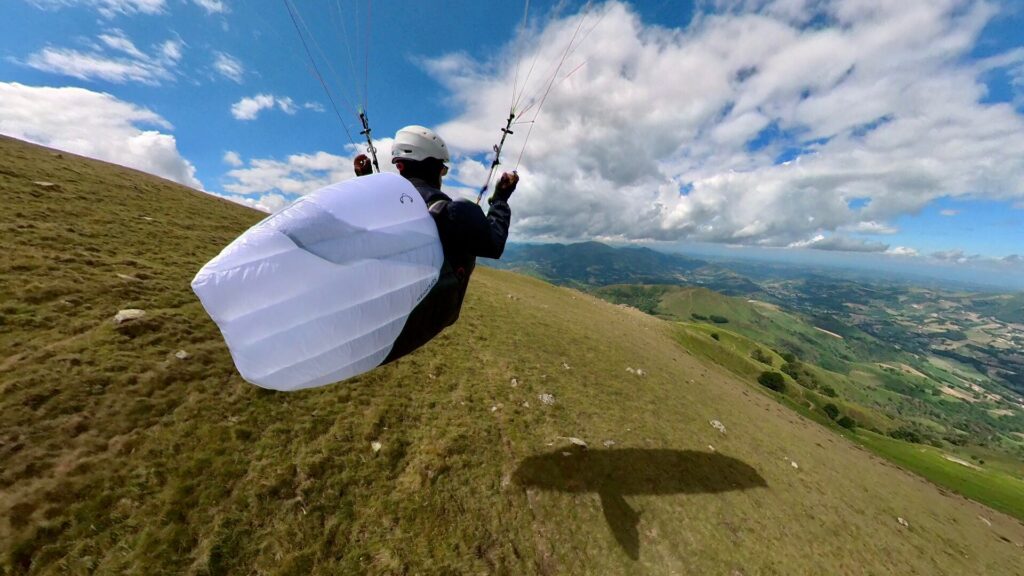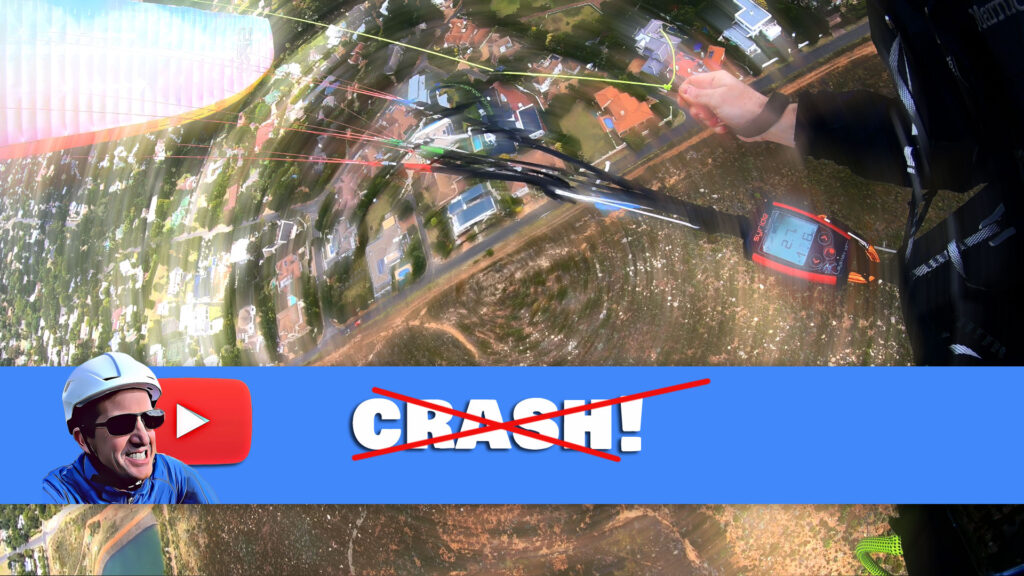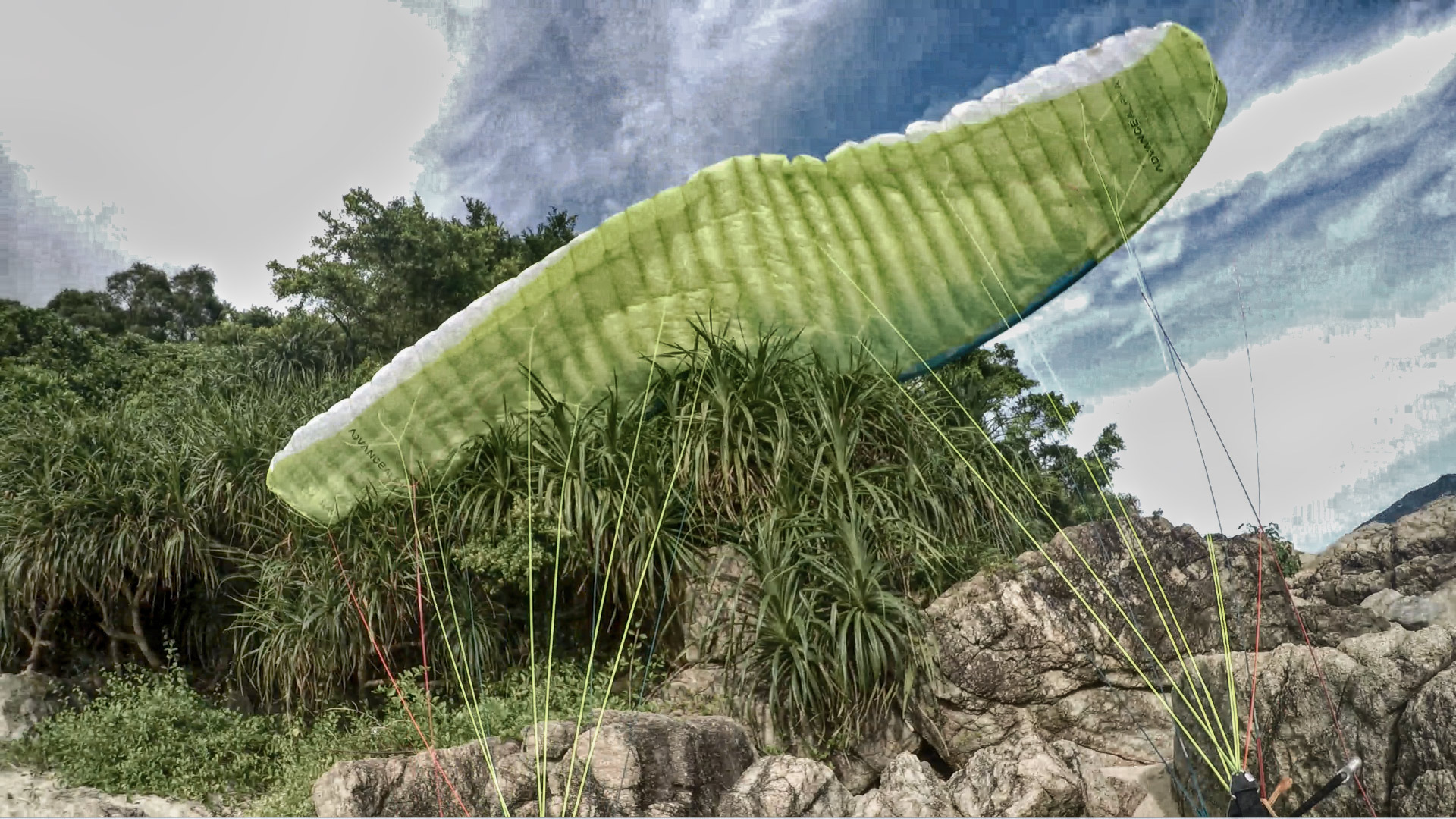A few weeks ago I published an article about the common paragliding accidents. But there are more, you say! Indeed there are, it’s a dangerous sport. But the mistakes keep happening in repeating patterns, so by studying these common errors you can keep yourself safe, or at least, get a heads up so you know what to focus on when you go paragliding.
6. DANGEROUS ROUTE
A bad site choice can lead to a flight path that puts you in danger.
Rough, rocky terrain increases the risk of turbulence, and limits your emergency landing areas. If there are no visible wind indicators (lakes, fires, airborne gliders) the site risk is even higher.
Reduce the risk by hiking to higher elevation to improve the glide line.
Improve your ability to judge safe routes by visiting popular sites, observing other pilots and setting yourself glide challenges with safe alternatives.

7. PROXIMITY
‘I would have been fine but I just didn’t have enough height’ is an unacceptable explanation for an avoidable accident. This usually results from a poor lookout, bashing into other pilots or obstacles by misjudging velocity and glide angles, or getting boxed in through lack of forward planning.
Beginners have a limited ability to recognize this kind of danger. You might only notice that you’re in trouble when it’s too late.
So reduce your risk by always evaluating your position relative to others. You should aim to be the pilot in the safest place. Get away from the ground and acceleration zones.
Improve your ability to judge your proximity by soaring on the coast, where you can be precise with your position.

Be on high alert when you’re close to the terrain
8. STRONG WIND
We all fear being blown backwards over terrain, which can push us into scary turbulence or hazardous landing zones.
Reduce the risk by scrutinising the weather forecasts, especially at altitude.
Improve your chances by heading out to landing whenever your ground speed approaches zero at trim (no speedbar), and by flying over ridges that are angled to the wind (not lying across the wind) so you can escape being pushed over.

Big wind in big terrain requires expert judgement
9. GUSTS
Some airmasses have a nasty character, usually caused by mixing. Unstable air with strong heating causes strong thermals, and when the wind runs across the slope it encourages gusts to intensify.
Reduce the risk by avoiding mid-afternoon, lee-sides, rocky slopes in spring time, and days when the forecasts disagree with each other or mismatch with your observations on site.
Improve your chances by placing a windsock to identify straight, steady conditions. Study piloting textbooks like Thermal Flying (Martens) and Understanding the Sky (Pagen).

10. DODGY GEAR
Poor gear checks and a lack of maintenance can cause equipment failure. The silent killer is a glider that is out of trim (or wet, old, cheap, badly repaired) which can collapse a lot, go parachutal, and not recover.
Reduce the risk by getting your equipment serviced regularly.
Improve your chances by matching your wing class to your ability.

ALL TOGETHER NOW
Before you fly, consider all the dangers. By identifying where the greatest risk for the day lies, you can make an effort to take precautions, and increase your safety margins. Try to reduce the number of risk elements that will impact you as a pilot to avoid ‘decision overload’.
When you fly XC, you are visiting a new site every few minutes so this requires constant analysis, and lots of caution. For a detailed risk management method that will help you build a safe flying strategy watch Avoiding Accidents in the Flight Academy library.
Mental training is a large part of my system, because paragliding is all about decision making, so I teach you how to adopt strategies that help you to consistently make good decisions. The more knowledge you have about flying, the more you can stack the odds in your favour, removing the unnecessary hazards (like poor route choice, bad weather judgement, gear errors, and wing overcontrol) so you can deal with the most relevant risk and take the right evasive action. It’s all about being prepared!


